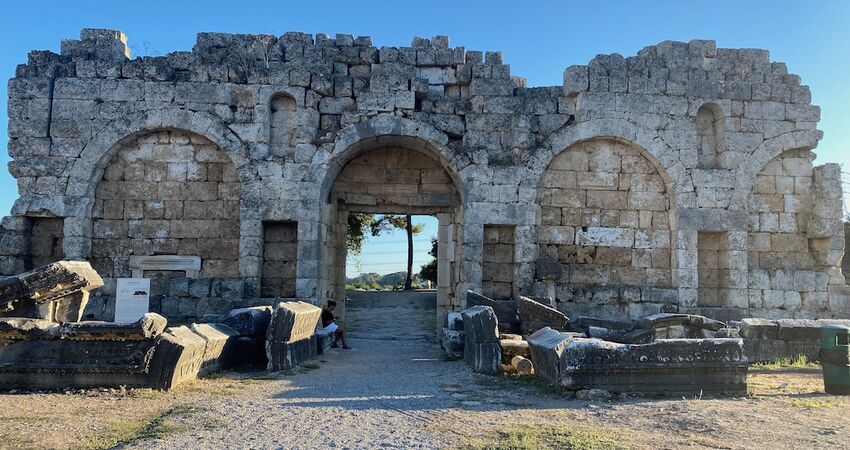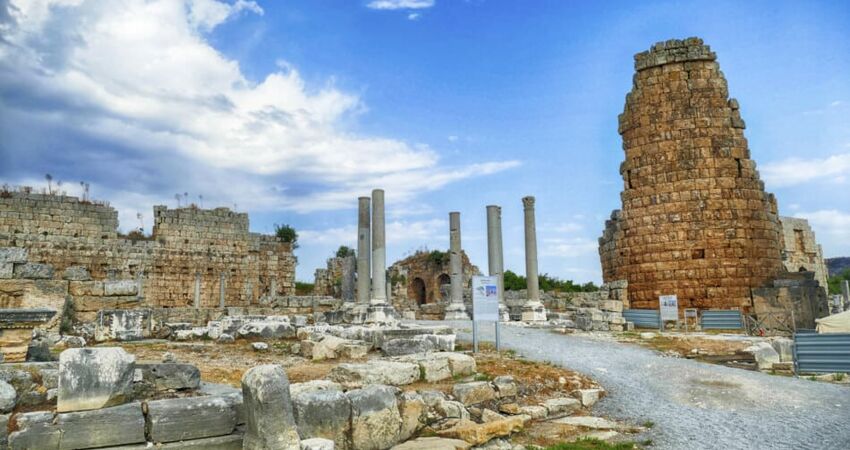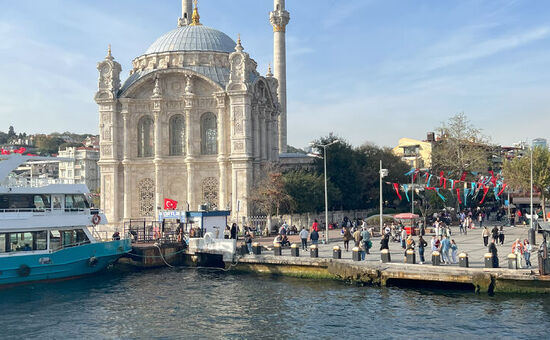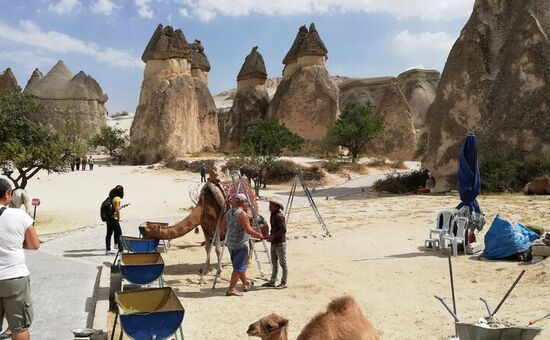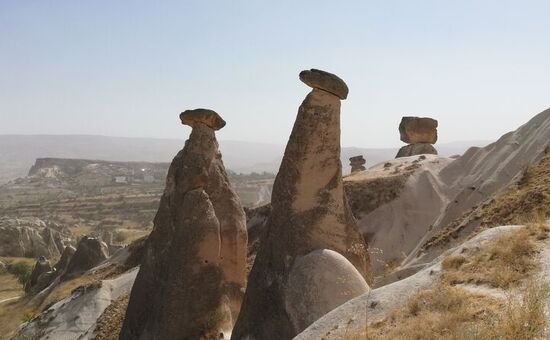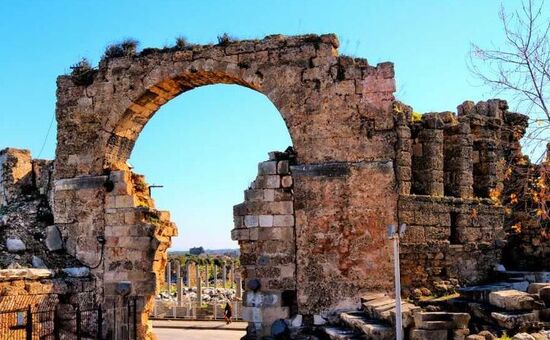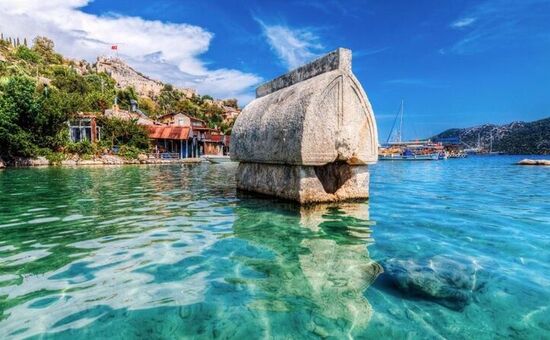Perge was one of the important cities in antiquity. The founding of the city varies depending on the sources. The inscriptions found in the Hellenistic gate refer to Calchas and Mopsus (from the Trojan Wars) and M. Plancius Varus and C. Plancius Varus, father and brother of Plancia Magna, from the 2nd century AD as well. Hittite records mention the name along with the river Cestros as Parha, which means that the city was already large and must have been founded before. It has benefited from the navigable Cestros (modern Aksu) river even though it is some 12 km inland. Perge has two faPerge was one of the important cities in antiquity. The founding of the city varies depending on the sources. The inscriptions found in the Hellenistic gate refer to Calchas and Mopsus (from the Trojan Wars) and M. Plancius Varus and C. Plancius Varus, father and brother of Plancia Magna, from the 2nd century AD as well. Hittite records mention the name along with the river Cestros as Parha, which means that the city was already large and must have been founded before. It has benefited from the navigable Cestros (modern Aksu) river even though it is some 12 km inland. Perge has two famous women benefactors. Plancia Magna of the 2nd century AD and Prof. Jale Inan. The previous one helped building the city and the latter one uncovered it for us to see it. The theater is the first building that meets us. Unfortunately it is under restoration. The stadium which is one of the best preserved in Turkey, is next. After the Roman gate we are in the grandeur 2nd century Roman city of Perge with its monumental nymphaeums, the Roman bath, and the Hellenistic gate (renovated in the Roman times as an honorary hall with the statues of the founders of the city). After the Hellenistic gate, you may walk the splendid colonnaded Cardo of Perge with artificial waterfalls all along the street to the foot of the acropolis. The Agora can be visited on the way back. mous women benefactors. Plancia Magna of the 2nd century AD and Prof. Jale Inan. The previous one helped building the city and the latter one uncovered it for us to see it. The theater is the first building that meets us. Unfortunately it is under restoration. The stadium which is one of the best preserved in Turkey, is next. After the Roman gate we are in the grandeur 2nd century Roman city of Perge with its monumental nymphaeums, the Roman bath, and the Hellenistic gate (renovated in the Roman times as an honorary hall with the statues of the founders of the city). After the Hellenistic gate, you may walk the splendid colonnaded Cardo of Perge with artificial waterfalls all along the street to the foot of the acropolis. The Agora can be visited on the way back.
Apendos was originally built on the navigable river Eurymedon, on the mountain where the acropolis is today. The oldest name of the city we know; Asiawanda (the land of the horses) in the old local Anatolian languages is now very famous for its most intact 2nd C AD Roman Theater and the aqueducts which are a rare feat of engineering. The Theater was built by Zenon one of the most famous architects of the time in the 2nd century AD. It is known as the best preserved Roman Theater with very good acoustics with a capacity of 15,000 spectators. It is known to hold 20 000 people nowadays when there are concerts by nationally and internationally famous orchestras of classical music and singers. There are concerts, plays and other entertainments through out the tourist season. It was used as a church during the Byzantine times and as a palace during the Seljukâ?Ts reign. Other than the lack of decorative statues, etc. of the stage building, it is in perfect condition. The water was brought to the city from the mountains through tunnels and over the aqueducts. The aqueducts that bring water to Aspendos are a great feat of engineering, very rare of its kind. The aqueducts cross a marsh of almost one kilometer by piping made of stone fittings on lower aqueducts. The towers of 30m height are used to change the direction of the piping and also for the siphoning system.
Side has existed at least since 1400 BC and has still kept her original name Side, which means pomegranate in the old anatolian Sidetan language. This is provided by the coins from the 6th C BC and three records from 3rd C BC. This language has not been deciphered yet two of the only three records found are bilingual. This language was in use until after the invasion of Alexander the Great around 333 BC, when â?~koioneâ?T the common dialect of greek was used. Side is unique in many ways. It still offers the small sweet anatolian fisherman town atmosphere despite the flood of tourism. The long, fine, sandy beaches are also worth mentioning. The city was built on a flat peninsula instead of a mountain acropolis, for defense, like Perge, Sillyum and Aspendos. Instead the peninsula is walled on both the land and the sea all around. The first buildings that meets you are the aqueducts, bringing water from 32km from the mountains. The monumental nymphaeum is the next. The colonnaded main street with shops and houses on both sides take you to the inner city. The Roman bath which is restored as a museum is on the right near the monumental Roman gate.The theater, the largest in Pamphylia, is built on flat land instead of resting on a slope. It rests on a multi-story sloped arches, 17m high, and is a true wonder of Roman engineering. The stage building is higher, 21m. The adjacent buildings of the extensive agora and the temple of Tyke and fine public toilets within are closed to visitors for the time being. The Temple of Apollo and Athena have some columns that and have been restored on the beach near the harbour are the symbol of Side. The Byzantian Basilicas, the Temple of Man and the Bibliotect are a few of the other buildings
08.15
Pick up from your hotel in ,depart for fully Guided Perge & Aspendos & Side Tour
Visiting
Perge antique site in detail
Stadium
Roman Gate
Nymphaeum
Roman Bath
Hellenistic gate
Colonnaded Main Street and the Agora
Aspendos Theater and the Historical Aqueducts
Shopping Break where also the Turkish handcrafts are introduced
Introduction of Side and an hour and a half free time
18:30
End of the tour transfer to your hotel
PLEASE ASK FOR PRIVATE TOUR PRICE.
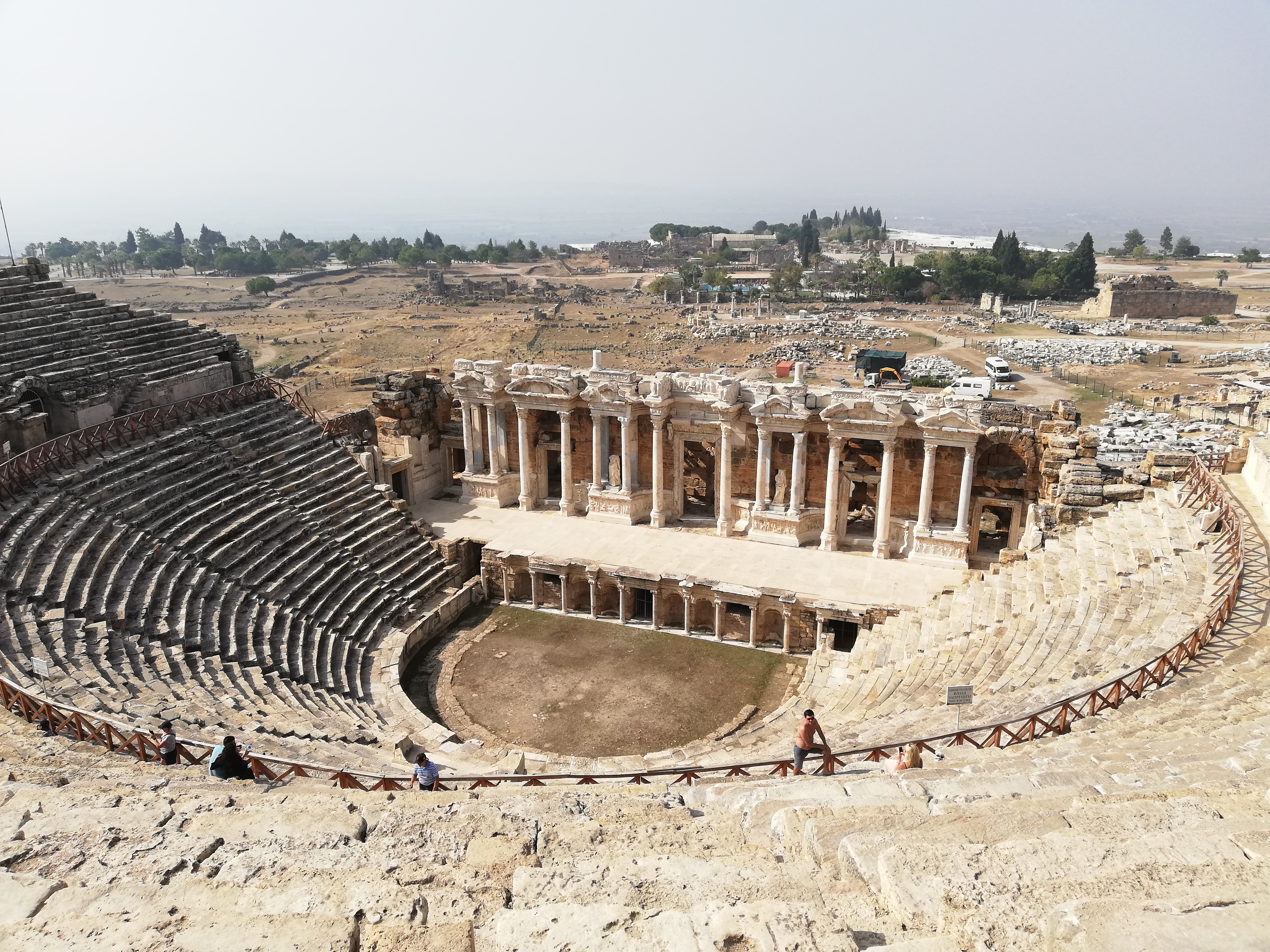
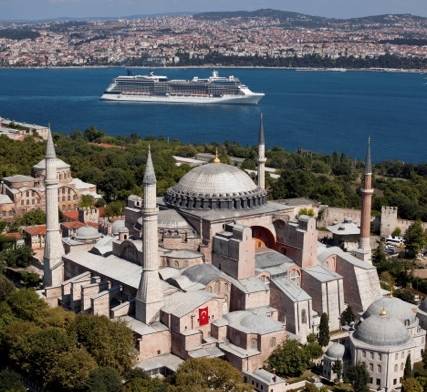



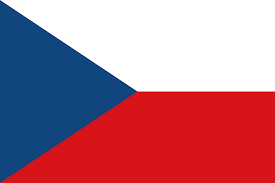 CZ
CZ HI
HI ES
ES IT
IT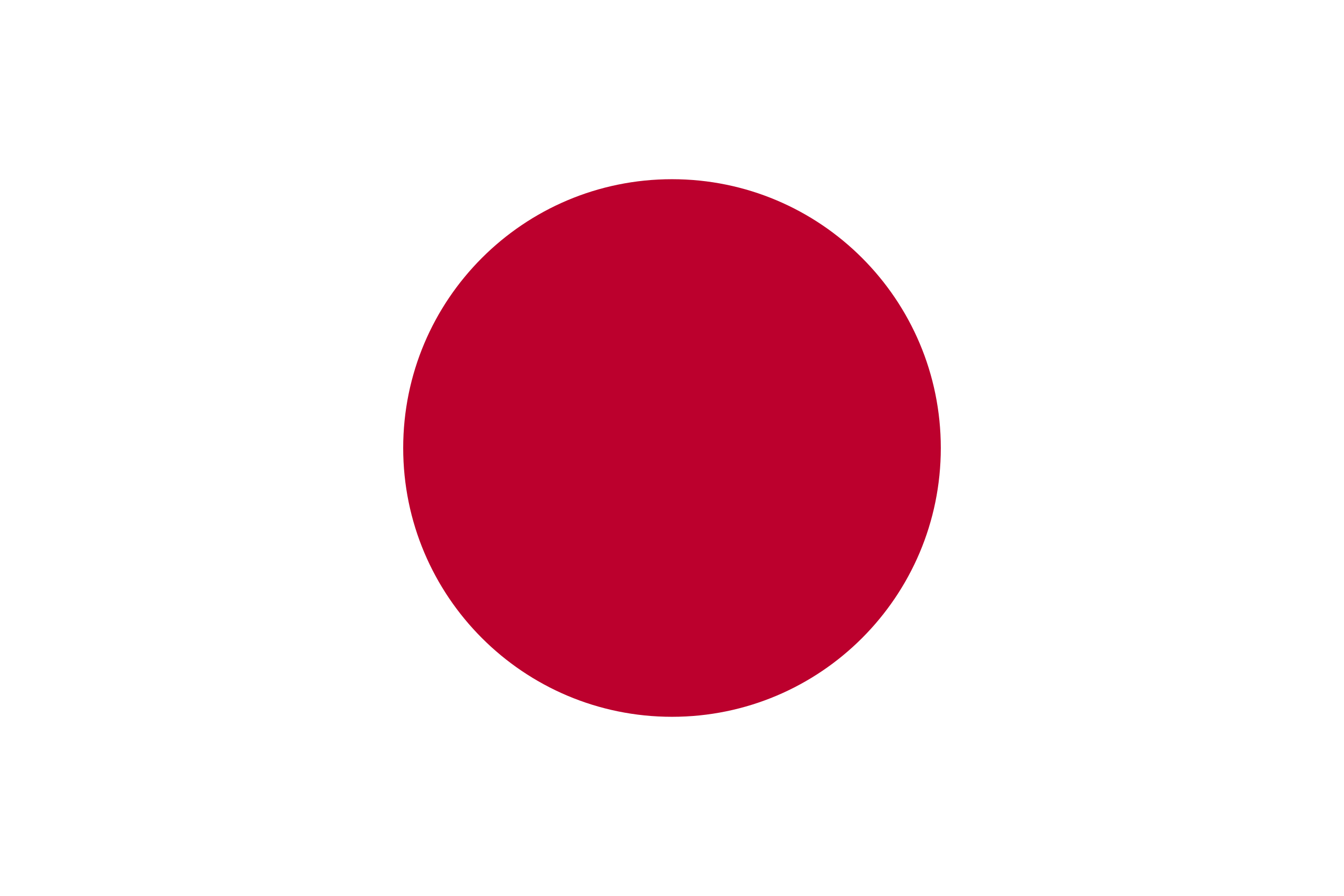 JA
JA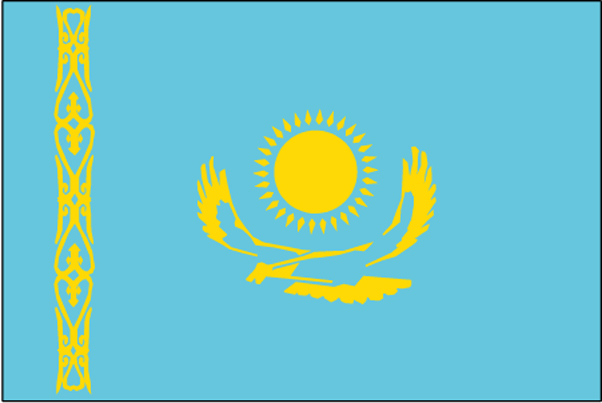 KAZ
KAZ PL
PL PT
PT RU
RU TR
TR
